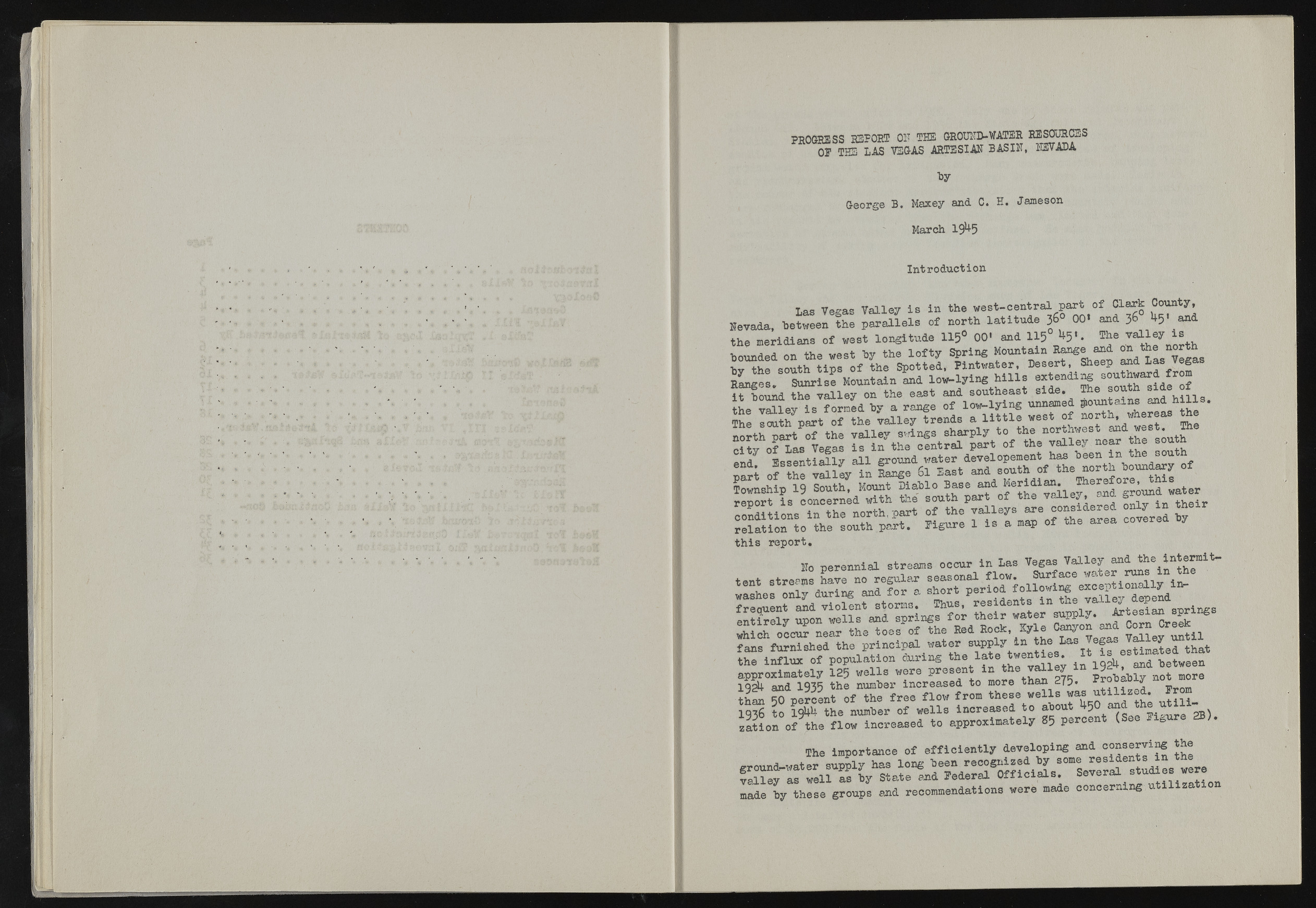Copyright & Fair-use Agreement
UNLV Special Collections provides copies of materials to facilitate private study, scholarship, or research. Material not in the public domain may be used according to fair use of copyrighted materials as defined by copyright law. Please cite us.
Please note that UNLV may not own the copyright to these materials and cannot provide permission to publish or distribute materials when UNLV is not the copyright holder. The user is solely responsible for determining the copyright status of materials and obtaining permission to use material from the copyright holder and for determining whether any permissions relating to any other rights are necessary for the intended use, and for obtaining all required permissions beyond that allowed by fair use.
Read more about our reproduction and use policy.
I agree.Information
Digital ID
Permalink
Details
Member of
More Info
Rights
Digital Provenance
Publisher
Transcription
PROGEE SS REPORT OIT TEE GROUND-WATER RESOURCES OP THE LAS VEGAS ARTESIAN BASIN, NEVADA by George B. Maxey and C. H. Jameson March 19^5 Introduction Las Vegas Valley is in the west-central part of Clark County, Nevada, between the parallels of north latitude |8 00» and 36 ^5' and the meridians of west longitude 115° 00' and 115 ^5‘ - Va^ ® y bounded on the west by the lo fty Sfering Mowtnin Ennge and •K,r an„tv, tins of the Spotted, Pintwater, Desert, Sheep ana nas Ranges MountainInd le v y in g h ills extending southward from j T S & d th T v S ley on the east and southeast side. The south side of the vSley is Srmed hy a range of low-lying unnamed Sountarns an d h ills. R e i S t f p ^ t of the v a lle y t rends a li t t le west of north, whereas the ,. . * 4-v»a 1 ov shSTPly to "th.6 nOrtllWQSt aHu. W6St>« S t r o f S s l e g S ItJnyt ^ S S T p a ? t of the v a lle y near the south ,y ™ t i l i v a l l ground water developement has been in the south * o f t h e v S l e y l n g ^ V l l i s t and south of the north boundary of Township 19 South. Mount Diablo Base “f J * ^ ^ o n f S ^ d 'w a te r report is concerned with the south part of the valley, ana grow conditions in the north, part of the | d l « . » • g * * relation to the south part. Pigure 1 is a map of the area coverea y this report. No perennial streams occur in Las Vegas tent streams have no regular seasonal flow. Surface we t i n_ washes only during and for a short p w to d fo j* d^end frenuent and violent storms. Thus, residents in the vanej aepe entirely Son wells and springs for their water supply. which occur near the toes of the Red Rock, Kyle Canyon and Corn Creek fans furnished the principal water s u p p l ; e l S m a t e T f e a t the influx of population curing the late *we^ * e * ' iq2^ ^ between approximately 125 wells were present in the valley m 9 » » <^ more Toph and 1935 the number increased to more than 275* p th S TO nerient of the free flow from these wells was utilised, from 1936 to M #t the number of wells Increased to about >*50 and . sation of the flow increased to approximately 85 percent (See Fi6ure SB). The importance of efficiently developing and conserving the mSe by these groups and recommendations were made concerning utilization

